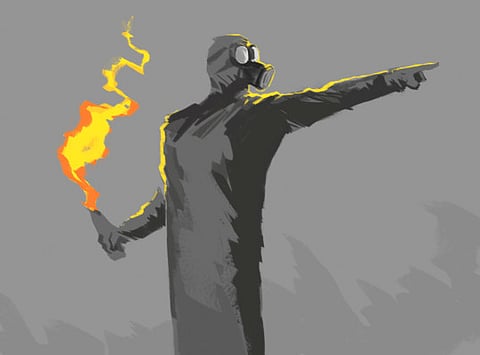Ukraine crisis goes beyond east vs west
The current crisis in Ukraine is far from simple

Last autumn, it would have been barely conceivable that the new year would find Ukraine on the verge of civil war. Ukraine had declared, voted for and embraced independence from the dying Soviet Union without bloodshed in 1991. It had celebrated and survived the Orange revolution in 2004-2005, forcing the re-run of a rigged election and escaping violence, if only just. And four years ago, it transferred power in a passably-run election to current President, Viktor Yanukovych.
Post-Soviet Ukrainian politics has been messy and tainted by corruption, but in many ways are more spontaneous and democratic than in the countries around Ukraine. Now, for the first time, some of the tensions that always seethed have erupted into violence.
With more than 25 people dead, it is a catastrophic turn of events that may be hard to reverse — not least because the confrontations have now spread beyond the capital. At this point, it is important to be clear what the fighting is and is not about. It is not about reversing independence. Despite doom-laden forecasts about an east-west split — between those whose first language is Russian and those whose first language is Ukrainian — Ukrainians in both camps have consistently supported independence.
The eastern part of the country may look culturally, economically and in its religious Orthodoxy, towards Russia, and the mainly Catholic western part — centred in Lviv — towards Poland and Europe, but everyone is more mixed up than this simple division would suggest. More to the point, polls have never shown that Ukrainians have any appetite, even in the east, either for seceding or, still less, for returning to Russia’s administrative embrace.
Nor is the conflict any longer about the issue of principle over where it began: President Yanukovych’s decision to accept an economic package offered by Russia, rather than the association agreement held out by the European Union (EU).
Over the past four months it has evolved from a contest between alternative visions for Ukraine’s future — orientated to the east or the west — into an internal struggle against the corruption, mismanagement and general inadequacy of the Kiev government. The calls are not for Yanukovych to change his mind, but for him to go.
To many Ukrainians, the EU still stands — unrealistically, EU citizens may think — as a cypher for clean government, law and order, and high living standards. However, the conflict has become an all-Ukrainian conflict, precipitating a potentially revolutionary situation. It can no longer be controlled, if ever it could be, by outside forces, whether Russia or the EU.
Which does not mean that outsiders cannot exert a positive influence over what comes next. But for that, two things need to happen. The EU needs to abandon the absolutist language — all or nothing, now or never, Europe or Russia — that accompanied its offer of a trade agreement last November and the threats of sanctions that some EU leaders are now mooting. Moscow, for its part, has to drop its own threats about the dire fate that would await a Ukraine outside Russia’s orbit.
The coincidence of the Ukrainian crisis with Russia’s winter Olympics, taking place not a million miles from their joint border, presents Russia with a choice that is as stark as that facing Ukraine. If it is serious about presenting a new, modern face to the world, it needs to see Ukraine not just as an independent country, but as a borderland to both east and west. A readiness by Moscow to join the EU in devising a rescue plan for Ukraine, with no political strings attached, will do more to draw a line under the Cold War even than the shining venues and friendly faces at Sochi.
— Guardian News & Media Ltd
Mary Dejevsky is a former foreign correspondent.
Sign up for the Daily Briefing
Get the latest news and updates straight to your inbox



